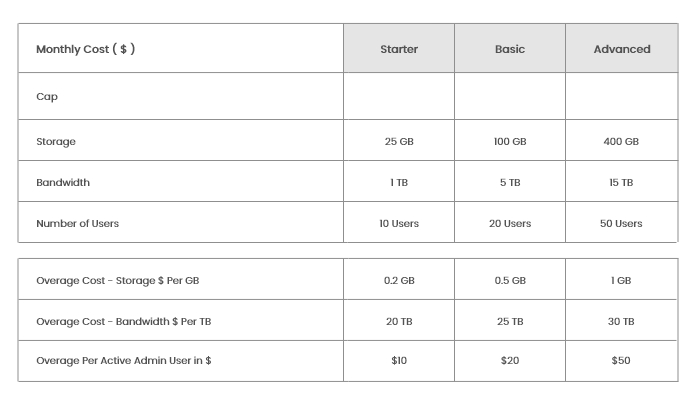



How to Conduct a Competitor Analysis in SEO
An SEO competitor study can assist you to enhance your site's ranks and boost search traffic...
What Is Competitor Analysis in SEO?
SEO competition analysis is the process of analyzing your competitors to learn about their SEO methods, strengths, and flaws.
And applying this knowledge to your own SEO. Finally, you want to outperform your opponents.
A competitor analysis enables you to:
- Discover and duplicate your competitors' winning techniques.
- Discover and exploit your competitors' weaknesses.
- Compare your current SEO performance to that of your competitors.
- Understand your niche's general competitive landscape.
What Is the Importance of SEO Competitor Analysis?
A competitive analysis allows you to examine the search environment for key terms.
So you understand how difficult it will be to outperform your rivals.
Furthermore, it can disclose previously unseen keywords, content ideas, and link-building chances.
An SEO competitor study can assist you to enhance your site's ranks and boost search traffic.
How to Conduct a Competitive SEO Analysis
Let's go through the steps of conducting an SEO competitor study.
Determine Your Competitors
Your SEO competitors are websites that score high for your target keywords in organic search engine results (such as Google).
Begin by Googling your goal keywords and reviewing the websites that appear at the top of the search results page.
Choosing Who to Avoid Competing With
Every competition you encounter will not be your genuine competitor.
It's not worth it, for example, to try to outrank sites like Wikipedia.
These websites may be organic search competitors, although they may not be direct commercial competitors.
Websites that provide similar items or provide similar services are your genuine competition. Or websites in the same niche that cater to the same demographic.
Locate (and Fill) Keyword Gaps
Pay close attention to the keywords for which your competitors rank but you do not.
That void is an opportunity for you.
Determine your strengths and weaknesses
Every website has a number of flaws.
Consider the following characteristics to identify your competitors' strengths and weaknesses:
Authority
Authority is a measure that ranges from 0 to 100. It uses a range of metrics to assess a site's SEO effectiveness and general quality.
The greater the score, the better the chances of ranking higher for relevant keywords.
In general, if your competitors have a better authority score than your site, it will be more difficult to outrank them.
Content
Analyzing the content of your rivals can help you answer issues like the following:
- Do they produce high-quality content?
- Do any of the connected articles appear to be thinner and less comprehensive?
- Do they prioritize product pages over subject pages or how-to guides?
- Is it merely one type of content or a variety?
Examine each competitor's content and make a list of any strengths or weaknesses that stand out.
You can imitate their advantages. And take use of their flaws. So your material is superior to that of your competitors.
Create projects with the tool for your own and your competitor's websites, and then conduct crawl-based assessments.
When the audits are finished, you'll obtain an overview of each website's technical health.
New Keyword Rankings
It's worth understanding whether your competitors are targeting new keywords. You might also wish to target the same keywords.
Examine each keyword separately. Determine whether additional pages are required to address these keywords. This includes blog entries, product pages, and category pages.
The sort of page you require is determined by your business focus and the published pages that are currently ranking for your keyword.
Lost Keyword Rankings
When your opponent loses positions for specific keywords, you can take advantage of those losses and turn them into victories for you.
Analyze each page separately
When analyzing pages for competitive analysis, pay special attention to the following on-page SEO factors:
Tag Title
Examine the title tags of the pages that rank higher than you. When analyzing, consider the following questions:
- Do your competitors use keywords more effectively than you?
- Are the target keywords near the start of the title tags?
- Do they use click-bait modifiers like "easy," "best," and "free"?
This should give you an idea of how to write title tags for search engines. So you can improve your ranking.
Tag for Meta Description
The meta description isn't a ranking criteria in and of itself, but it does provide a summary of the page's content. This is a crucial consideration for click-through rates.
Meta descriptions are frequently ignored. Especially on huge sites.
Take a look at how your competitors use meta descriptions. And make certain that yours are optimized to persuade a reader to click.
Tags in the Header
Google provides h> tags SEO weight. Instead of defining headers with CSS, always use HTML h> elements.
These headings can also be used by Google for highlighted snippets and other search features.
Compare your header tags to those of your competitors to identify areas for improvement.
Is your rival, for example, finding more natural methods to use target keywords in H2s and H3s? You might wish to follow suit.
URL Structure
Examine the URL structure of your competitors' pages that rank higher in search results than you. When analyzing, consider the following questions:
- Do your competitors' URLs use keywords more effectively?
- Do they make advantage of shorter URL slugs?
- Do their URLs describe the page's content?
You now have an action item if you observe anything your competitors are doing better than you. Improve your URLs so that they are on par with, if not better than, the URLs of your competitors.
Content and Keywords
Examine the pages that rank higher than yours. And scrutinize their material.
- How do your rivals use keywords on the page?
- Are there any secondary keywords that you may incorporate into your content?
- What is the level of writing quality?
- Do your competitors go into the same degree of depth as you?
- Is your readability score greater or lower than the average?
All of these factors must be considered while analyzing and comparing content.
Examine Backlinks
Backlinks are links to your website from other websites. Backlink analysis is an important component of SEO competition analysis.
When your competitors have stronger backlink profiles, it will be more difficult to outrank them. At least until you can establish a comparable backlink profile.
It all starts with differentiating between high-quality and low-quality backlinks.
Backlinks of High vs. Low Quality
Concentrate on high-quality backlinks from important news sites, high-profile sites, or well-established sites in your niche.
Low-quality backlinks, such as those from private blog networks, link farms, or spamming sites, do not help your rankings. Not for long, at any rate.
Backlinks with Nofollow vs. Backlinks with Follow
You should ideally have a large number of high-quality follow backlinks to your site. Because they spread PageRank.
Nofollow links instruct Google not to transmit PageRank along. Nonetheless, they can aid with referral traffic and numerous brand signals.
Don't disregard high-quality links just because they're designated nofollow. They have some worth if they come from credible websites.
Gaps in Backlinks
Backlink gap research identifies websites that link to competitors but not to you.
If someone is linking to your competition, it may be worthwhile to seek a backlink for your site as well. Backlink gap analysis can be performed using the Backlink Gap tool.
What to Do Following Major Algorithm Updates
Each significant Google algorithm update is an opportunity to reassess your and your competitors' top keywords.
- Did you both keep your positions?
- Has one of your competitors suddenly risen to the top of the search results for your keywords?
- Did another competitor tumble out of the top 20 SERPs altogether?
Competitive Analysis Is an Ongoing Process
You will need to redo SEO competition study every six to twelve months, depending on the size of your site and the number of active competitors.
To be competitive, parts of it need to be performed every month. Examining your competitors' new keywords, for example.
Keep an eye out for SEO-related methods that your competitors are employing on a regular basis. As a result, you can respond and implement your own.
Hocalwire CMS includes fantastic automation features that help traffic from various sources focus on your website. You may drastically increase your traffic with the aid of Google Analytics and potential choices with Hocalwire. To learn more about Hocalwire CMS's limitless potential, schedule a demo.

